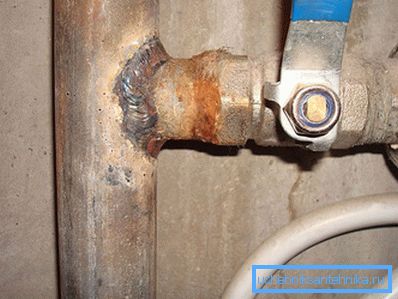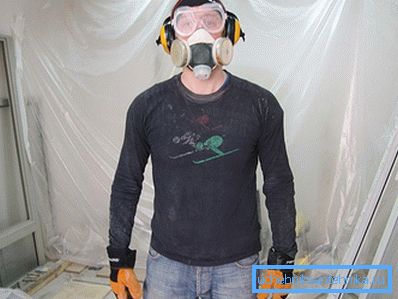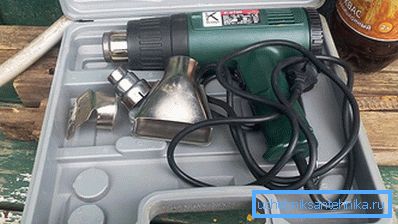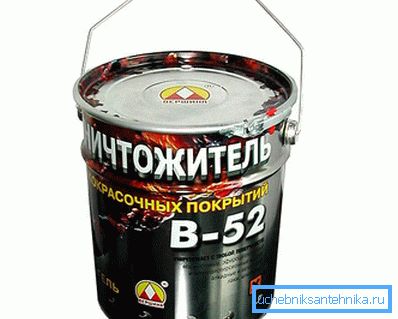How to clean the pipe from the paint
Many owners of their own homes during the inspection of the state of the pipelines in the apartment have to observe the problems that have arisen with metal pipes (most often plumbing), which show signs of rust and dirt through the damaged and swollen paint. It is highly undesirable to leave them in this state, since further destruction of the metal can lead to a serious accident. It is better to immediately understand how to clean the pipe from paint and paint it again.
If swelling of the protective coating is detected, it is necessary to carefully examine the condition of the damaged area, after which it will be possible to decide on further actions. If during the examination a strong destruction of the metal was found under a layer of paint, you should think about the complete replacement of this part of the pipeline. But if only the top layer of metal has undergone corrosion - it is enough to carry out a facelift of the pipe, resulting in cleaning it from old paint and rust (with the subsequent restoration of the protective coating).
Ways and nuances of cleaning

The choice of recovery method of the damaged section depends on the accessibility to it, which, in turn, is determined by the location of this part of the pipeline. So, in areas of direct pipe laying, getting to the damaged place is not difficult, which allows using conventional mechanical cleaning methods for these purposes.
Tip! There are always places on certain parts of any pipeline, access to which is restricted. In this case, you will have to use the so-called chemical method, involving the use of special cleaning agents.
Consider some of the features of each of these methods of stripping damaged areas.
In order to remove the paint from the site located on the direct run of the pipeline, you can use the following mechanical methods:
- use a building dryer to heat the injury site, followed by cleaning it from paint with a spatula or knife;
- in the absence of a powerful hair dryer, you can use the classic grinder or electric drill, equipped with a special nozzle in the form of a metal brush;
- if the paint layer on the damaged place is thin - you can use a blowtorch to warm it up.
And finally, in the case when the paint easily lags behind the metal - you can try to clean the surface using emery paper of the required grit. Upon completion of such cleaning, it will be necessary to wipe the surface with a damp cloth, removing the remains of emery dust from it.
Tip! When access to a damaged area is limited (or if one does not want to waste time not on the long-term removal of old paint by mechanical means), you will have to use special chemicals. Note that their use is possible in the case when you were unable to completely remove the old paint by mechanical means.
When considering the process of cleaning pipes, we will proceed from the need to share these two methods, which must be taken into account both during the preparatory operations and when choosing the required tool.
Instruments

In the case of chemical processing (or using one of the mechanical methods followed by additional chemical cleaning), you will definitely need the following tools and materials:
- medium spatula;
- a set of brushes of various sizes;
- rags;
- special chemical solvent;
- scraper and knife;
- manual metal brush;
- a set of sandpaper of different grain;
- drill with special nozzle;
- working clothes and goggles;
- respirator (mask).
Preparatory activities

Immediately before cleaning the pipe of paint by any of the considered methods, it is necessary to thoroughly prepare for the repair work. Such training consists of the following:
- First of all, from the room in which toxic chemicals will be used, it is necessary to remove children, the elderly and animals, and then ensure that fresh air can flow into this place (all windows and doors in the apartment usually open to ventilate the room).
- If there are carpets or carpets near the workplace, they are removed and temporarily transferred to another room. Such forethought will not allow the fibers of carpets to soak up the pungent odors of chemicals, and also exclude the possibility of accidental damage during the processing of pipes.
- In addition, all objects that interfere with it will need to be removed from the work area.
- Before starting work with reagents, it is necessary to change into working clothes, as well as wear protective goggles and a respirator. In the absence of a respirator, it will be possible to use a gauze bandage (mask), which is desirable to change every half hour.
- After that, you should carefully inspect the damage site again and finally make sure that the metal base of the pipe is intact and does not need to be replaced.
Processing features

Mechanical cleaning of pipes is reduced, as already noted, to heating the surface with a damaged protective layer and to subsequent cleaning it using a spatula, knife-cutter, metal brush or ordinary abrasive paper (the choice of a particular tool depends on the surface condition).

In the case of chemical cleaning, you can take advantage of a whole range of special products (solvents and washes), which are widely represented today in the domestic market. The following names deserve special attention:
- Solvent B-52, which allows to remove dyes of various brands. Its use is reduced to the impregnation of a cloth with a liquid, followed by wetting the damaged place with paint residues. For a better decomposition of the dye, it is recommended to leave a cloth with a reagent at the treatment site for 5–10 minutes.
- Special washes used for both metal and cast iron pipes, most often having an unpleasant, pungent odor. The requirement for obligatory airing of the room, as well as the use of a respirator or protective mask, applies to this case.
Tip! The wash is applied to the surface to be treated with a reagent-saturated brush for a period of time from 5 to 30 minutes (depending on the desired result). Before painting, the pipes cleaned in this way must be allowed to dry out completely.
Video
This video shows how to clean the pipe from paint:
See how you can remove old paint with a metal pipe and remover: